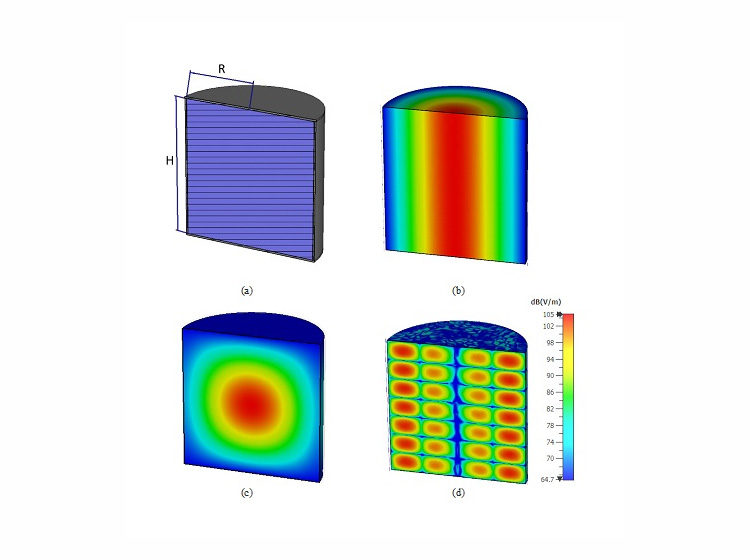We have recently introduced a new class of cavity resonators and filters, termed distributed resonators [1]. The distributed resonator allows a major reduction in the resonator profile while maintaining an excellent electrical performance. In [1], an individual distributed resonator consists of a number of low-profile resonant posts arranged in a grid, where the resonant posts on the vertical and horizontal axes of the grid mainly couple to their immediate neighbors. The substantial reduction in the filter profile, comes – to a degree – at the price of the footprint, mainly due to the fact that the individual distributed resonator consists of a number of resonant posts.
In this paper, the distributed resonator concept introduced in [1] is used to derive a novel configuration of the distributed resonator. The proposed resonator consists of individual resonant elements arranged interdigitally along the periphery of concentric rings, Fig. 1. This arrangement allows for an increased amount of coupling among the resonant elements, and hence further reduction in the occupied height and, explicitly, volume compared to the standard distributed resonator. This is achieved at the backdrop of maintaining the superior electrical performance traditionally offered by the standard distributed resonator.

As a practical demonstrator, a 3-pole filter is designed and fabricated and its performance discussed. The proposed filter is made to operate at a frequency of 1.8 GHz with an absolute bandwidth of 40 MHz. Each resonant chamber of the presented filter consists of 25 individual resonant elements arranged in an interdigitated fashion in three concentric rings. The overall cavity dimensions of the individual concentric resonator are 40 x 40 x 5 mm3 with an unloaded quality factor of over 1800. The cavity height of 5 mm or 10.8o is significantly lower than any other air-filled filter cavity solution available in the literature. The measured insertion loss of the filter is 0.44 dB, which is in excellent agreement with the theoretically predicted value of 0.37 dB, Fig. 2.

[1] S. Bulja and M. Gimersky, “Low-Profile Distributed Cavity Resonators and Filters,” IEEE Trans. Microw. Theory Techn., vol. 65 issue 10, pp. 3769-3779, 2017.



Leave a Reply